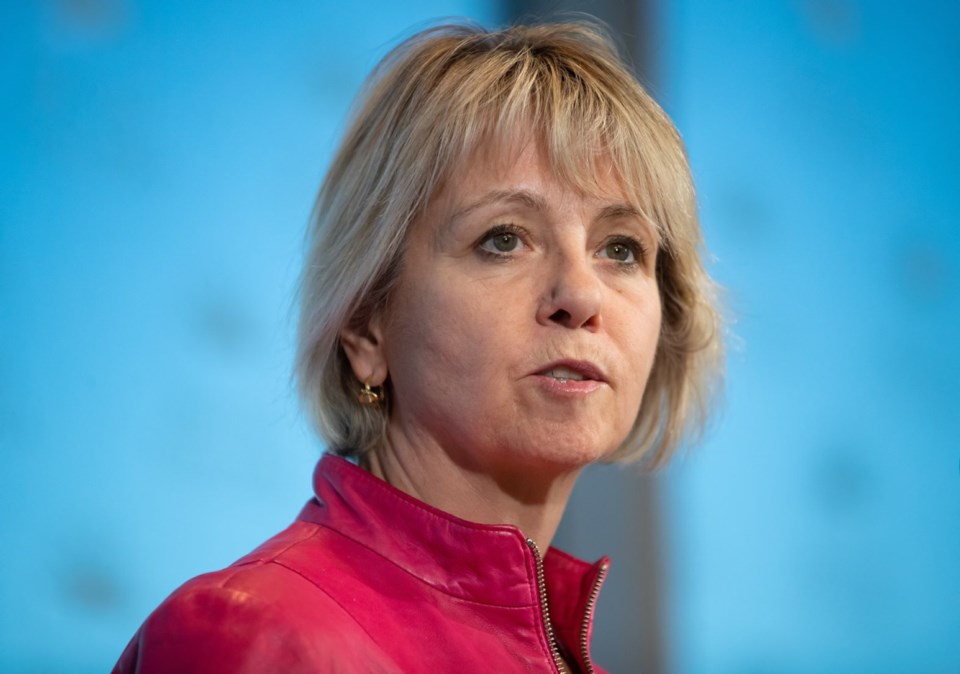Behind Dr. Bonnie Henry, who has rocketed to household name status in B.C. due to her medical leadership, there are offices where a pandemic has been pondered for years.
The provincial health office that she heads is one of several responsible for imagining a number of “what ifs”? A pandemic is one of them.
Reviewing some of that work confirms the impression that the COVID-19 response is far beyond anything anyone has imagined.
One of the basic references for the initial response was the Pandemic Influenza Response Plan, written in 2012.
It’s a lengthy outline of the thinking about what to do and how to do it, based on experiences with past flu scares in 1957, 1968 and H1N1 in 2009.
It makes reference to storage and distribution of vaccines and antivirals, which is the obvious key response.
But the crucial fact is that there is no such thing for COVID-19 and there won’t be for an indeterminate period of time.
The pandemic plan considered scenarios where “there may be delays in vaccine development and distribution of three weeks and a lower vaccine efficacy.”
A three-week wait today would be cause for rejoicing. Labs around the world are working on one, but it is several months away at best.
One exercise in the plan assumed two 12-week long waves of outbreaks, with a 12-week lull in between.
It predicted that transmission-reduction strategies — cough etiquette, hand washing, social distancing and staying home while ill, would reduce transmissibility by 20 per cent.
Social distancing has been maximized to a stunning degree for the coronavirus. So the current restrictions could be expected to reduce transmission much more than that.
The influenza plan forecast that a full-scale response to a pandemic would make for a huge reductions in cases, from three million down to tens of thousands.
Henry said Thursday at her daily briefing that even with the key difference regarding vaccine, the influence pandemic plan is a framework for the current response.
Supporting people to take care of themselves at home and interventions in the health-care system “are relevant for what we’re doing now.
“The framework for how we’re organized to respond comes directly from that [plan].”
The other difference is the longer incubation period for the coronavirus, which needs to be factored in.
B.C. officials are also relying on lessons from an Ebola scare in 2014. There was a remote chance of it spreading in B.C., but it is so lethal that Canada and B.C. joined in the global alert.
An after-action report on that response concluded B.C. was late kicking into gear, but reacted well.
It urged that “the level of readiness achieved should be embedded and sustained. …
“B.C. should build on this and previous communicable disease experience to develop an integrated outbreak readiness and response plan.”
Henry’s most recent annual report on pandemic readiness noted that B.C. has activated emergency responses several times. The coronavirus one is running concurrently with the emergency declaration on the opioid overdose epidemic.
The most relevant one seems to be the HIN1 outbreak. Henry’s report said it arrrived in Canada in two waves that peaked in June and November, 2009.
By the fall, hospitals were seeing their biggest demand. But the vaccine became available at that point and demand quickly dropped.
The count by early the next year was more than 1,000 confirmed cases of H1N1 with 56 deaths, 49 with underlying conditions .
Forty per cent of B.C. (1.8 million people) had been vaccinated by then.
The WHO lowered the threat level in April 2010.
B.C.’s response also included the same major communication effort as today’s — daily briefings, dedicated websites and multiple public warnings.
Health Minister Adrian Dix on Thursday cited Henry’s observation: “All models are wrong, but some models are helpful.”
Flattening the curve is now a catchphrase for the plan to lessen the impact. But all the graphs showing that effect also show that doing so stretches the impact over a much longer period of time.



